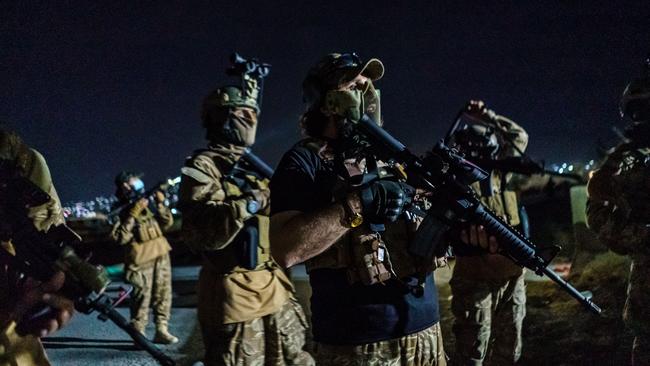How Russia came to use US weapons against the Ukrainians

Recall how the US withdrew from Afghanistan in late 2021 where thousands of people were wading through sewage at the gates of Kabul International Airport and throwing babies to US Marines over barbed wire, as the Taliban slowly closed its extremist fist over that country. In the wake of what Joe Biden described as an extraordinary success, billions worth of weapons were left behind and 13 US Marines killed in a suicide attack.
Tribesmen with out-of-date weapons sometimes demonstrate how the weak can make the strong suffer. The Afghanistan withdrawal was the flashing light on the dashboard of big power politics indicating a serious dysfunction within the US that risks Western freedom as much as Presidents Putin or Xi Jinping.
After it, a US Department of Defence spokesperson said: “While seizing this equipment may be beneficial to the Taliban, it does not represent a threat to the US, allies or partners.” It was absurd to insist that the uneducated Taliban would not be able to use or maintain this hi-tech weaponry. The Taliban was always going to sell it to someone who could.
Before onselling to the Russians, the Taliban gave the Iranian Revolutionary Guard Corps technicians full access to the weapons – drones, antitank weapons, missiles, armoured vehicles, more than 3000 M4 rifles and night-vision equipment. British security commentator Will Geddes politely describes this an example of connectivity across enemies of the West.
The US has been here before. During the Obama administration, then secretary of state Hillary Clinton was funnelling weapons left behind in Libya and dropping them into the hands of the so-called Free Syrian Army, which then jumped across to al-Qa’ida and ISIS to shoot US-backed Kurds and rebel groups fighting the Syrian regime.
A US Defence Intelligence Agency memo dated October 5, 2012, leaves no doubt that US intelligence agencies knew that weapons were moving from Libya to Syria before the attack on the US consulate in Benghazi that killed four Americans, including US ambassador Christopher Stevens.
One of the saddest aspects of the US-NATO mission in Afghanistan was that not only did it enable the Taliban to succeed, it failed in its one job: destroying al-Qa’ida. Despite all the history and all we learned from 20 years of war and spending $2.5 trillion, we couldn’t even turn the Taliban against al-Qa’ida, the West’s real enemy. The law of nature, where my enemy’s enemy becomes my friend, is implicit where survival is often about the strongest tribe. It’s just business.
It all makes you wonder how the proxy war against Russia in Ukraine is going to end, where billions worth of weapons are being sent to one of the most corrupt countries in Eastern Europe. It is making us poorer, depleting the West’s weapons stores and making arms manufacturers richer. It won’t end soon. And it may not end in a way where victory can be sustained. The end of most modern conflicts has been the beginning of another because of unhappy participants squabbling over the spoils and or the inability to totally destroy one side or the other.
While all this has been happening, Joe Biden had renewed negotiations with Iran over its nuclear program. That’s right, the world’s biggest sponsor of terrorism, which wants to wipe Israel off the map.
This reveals a pattern of psychological strategic incompetence eroding the West’s power and influence in the global rules-based order. It also demonstrates that Australia must accept the reality of our own predicament in a regional contest with China. As the US grapples with its own self-harm, forget the folly of defending Taiwan against China, Australia’s number one focus should remain on defending ourselves in our own backyard.
Dr Jason Thomas teaches high-risk strategies at Swinburne University of Technology and is director of Frontier Assessment.



If you were told the billions of dollars of weapons left behind by the United States in Afghanistan were sold to Iran and then to Russia to shoot Ukrainians fighting for our freedom, you’d be forgiven for thinking it a plan from Baldrick in comedy series Blackadder. Add to that scenario the fact the US has exchanged arms smuggler Viktor Bout for a basketballer. As they say: foolish friends are more dangerous than smart enemies.